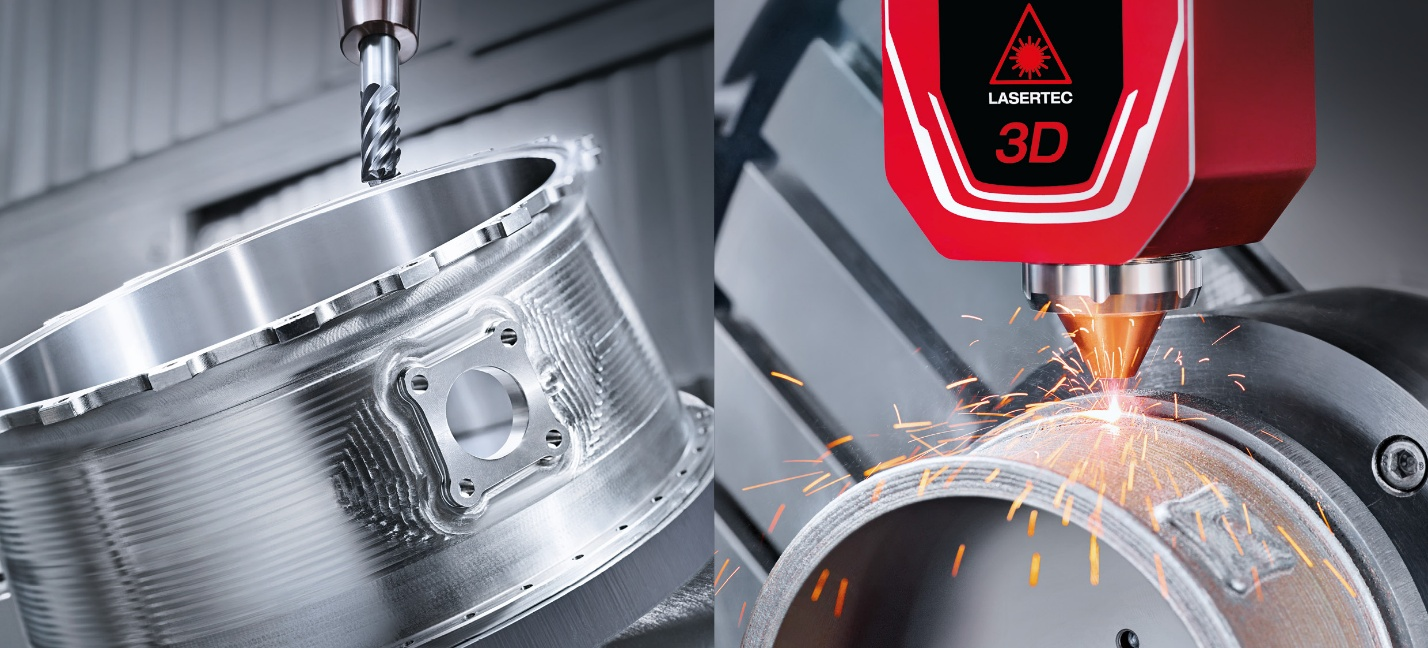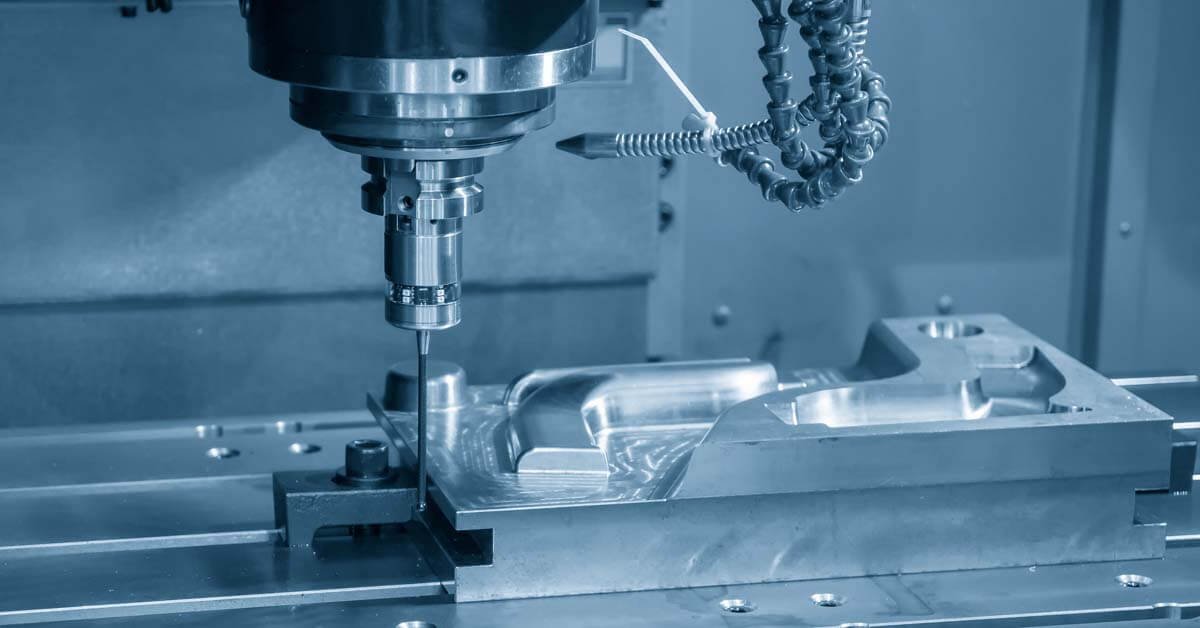We frequently hear about aluminum CNC milling centers with linear and hard rails. What distinguishes the two from one another? Which is superior? I think many professionals in the field are ignorant.
The guide rail system determines whether the machine moves along the x, y, or z-axis. In the beginning, guide rails featured a v-guide and a roller that could only travel back and forth. Round bars were later created using this idea, but they weren't strong enough to support large weights or have wide machining.
Hard and linear rails are the components of the CNC bed. The hard rail, which is appropriate for making steel CNC machined parts, has good rigidity. Due to their rapid movement, line rails are specifically utilized for aluminum CNC milling services; but, soft rails have low strength than hard rails. But, what basic difference makes one superior to another? Let's discuss this in detail.
What are hard and linear rails?
A significant idea in machine tool design is axis motion, in which the machine moves along the x, y, or z-axis as determined by the guide rail system. A hard rail is also known as a hard guide rail, while a linear rail is a linear guide rail.
Linear guides also called linear rail slides, are support mechanisms used to assure level, straight, and load-bearing linear travel. The sliding carriage and the rail are the typical components of linear guides. The two most used types are sliding guides and roller-bearing linear guides. There basic characteristics are mentioned below

The rail, carriage, balls, and other components that make up the aluminum CNC milling manufacturer linear guideway. These are part of a complicated mechanical system that exhibits strong nonlinear properties because of the contact between the balls and the rolling surface. Listed below are the linear guideways.

Hard rail refers to a guide rail that is directly formed on the custom aluminum milling machine tool's permanent components, such as the bed and column, and then connected to the table or other moving parts by a sliding seat. The hard rail has a great capacity for heavy cutting as well as a significant degree of stiffness, carrying a reasonably big amount of weight.
The axial thrust is significant, and the three shafts of the CNC milling manufacturer are connected by direct transmission. It uses a large base and a supporting framework with four tracks. In order to process big and medium-sized workpieces, particularly molds, the vertical machining center should be appropriate.
The hard guide rail can withstand significant cutting force and is typically used for machine tools over 1.3 meters, which is the main distinction between the two. These machines are primarily used for processing molds, but one drawback is that the guide rail cannot move too quickly.
Aluminum CNC miling Machine Center
The principal tool used in contemporary metal cutting is the CNC machine tool (also known as the machine center). It serves as the foundation for both the flexible manufacturing system (FMS) and the computer-integrated manufacturing system (CIMS), and it is becoming more and more crucial to aluminum CNC milling manufacturing automation.
A machining center is a CNC machine tool with a cutter-base and manipulator that provides automatic cutter change capabilities. It has a higher level of automaticity than the primary class of aluminum CNC milling service’s machine tools.
The CNC machine tool center (sometimes referred to as the machine center) is a cutting-edge production tool that can carry out a range of machining operations with exceptional precision, quality, and surface finishing. Drilling, milling, and turning operations can all be done at a CNC machine tool center.

The horizontal and vertical machining centers are the two available forms of aluminum CNC services. This is referring to how the primary spindles are oriented. Horizontal and vertical machining are available in a variety of sizes, from compact, bench-mounted units to large, room-sized machines.
Axis guide rails can be classified as hard rail or line rails depending on the vertical machining center that they are used on. The track motion is more sensitive on the hard rail, which is ideal for cutting heavily. The C type and gantry machining centers can be classified as vertical machining centers based on the bed structure.
Employing Hard Rails in the Aluminum CNC Milling Machine Center
Hard rails, and particularly hard rail vertical machining centers, receive less attention. Is it not effective? not. What then distinguishes the hard rail vertical machining center? Let’s explore some in detail.
Typically rectangular, or "rectangular rails," are the hard rails used in aluminum CNC milling machining centers services..
The hard rail is excellent for heavy-duty cutting because it has a sizable sliding contact area, good rigidity, and load-bearing capability. The machine tool operates more smoothly due to the huge contact surface of the guide rail, making it suited for tools with high vibration requirements, such as grinding machines.
Dry friction is the domain of the hard guide rail. Since there is a lot of contact surface, there is also a lot of friction resistance, hence the moving speed cannot be too high. Additionally, it is simple to creep, and a gap on the moving surface will result in a machining error.
In order to achieve the best circle precision, the X, Y, and Z axes use linear sliding rails for X and Y and hard rails for Z, in a high-performance linear rail machining center. Which has high rigidity, low noise, and low friction characteristics. X, Y, and Z axes move quickly at 36 m/min and 18 m/min, respectively.
Utilizing Linear guides in Aluminum Milling manufacture

Shortly, CNC machines wouldn't have a path to move along without the usage of a linear rail system. A properly operating linear system is securely installed. The ability of the machine to go along the path as intended will be hampered if a rail system is placed incorrectly.
The precision, speed, and machining stability of aluminum CNC milling machine tools are significantly influenced by the static and dynamic properties of linear guideways because of their direct link to stages or spindle boxes.
Compared to the conventional guide with a sliding contact interface, the linear guideway is the more common and efficient transmission system used in aluminum Computer Numerical Control (CNC) milling services because it causes less wear and friction force at the ball grooves.
Different Applications of Hard and Linear Rails
Using the linear guides as a guide machine table is precisely moved in the direction of its X or Y axis. One of its useful applications is in inspection or manufacturing equipment for semiconductors that need extremely precise positioning. A material handling robot that travels to load and unload the work uses linear guides.
In this application, each table is guided by a linear guide in one of three directions: X, Y, or Z. For instance, in the case of an aluminum CNC milling machine tool for cutting, linear guides are used to deal with temperature rise and durability difficulties linked with the need to make feed speed (quick traverse, cutting feed) ever faster, which cannot be performed by the sliding contact linear motion bearing. Additionally, the use of linear guides will make it simpler to maintain accuracy over an extended period of time.
On the side opposite the datum face of each rail, there are markings for its reference number and serial number. Additionally, ball slides that need to be put together on specific rails have their own serial numbers and arrow marks. The ball slides must be installed such that the arrow markers point in the same direction.

When two or more rails are used together and have the same reference numbers, their serial numbers must be arranged in order. Additionally, "KL" is added to the assembly with the fewest number of them. When two or more rails are used together but have distinct reference numbers, their serial numbers match.

You must utilise butted rails when the length of the application exceeds the maximum length of a single rail as mentioned above in figure. For butted rails, match marks like A, B, C, and so forth are put on the rails' surfaces in opposition to the datum faces. Lay out the rails in accordance with those match marks in order.
Benefits of Hard and Linear Rails
- The sliding and rolling performance of the linear guide is superior to that of the hard rail, and there are no creeping phenomena. The linear guide is supported by rolling parts.
- The movement speed is quick and the friction coefficient is low;
- The wear and friction coefficients are both low.
- The linear guide's precision is also higher under normal conditions since it is made of better materials and more precise machinery.
- Convenient for future upkeep. Because the gap needs to be corrected and the hard track is problematic, it is simple to replace the aluminum milling service line track when the guide rail wears out.
- Hard rails are appropriate for roughing machine tools with large tool volumes and high feed rates and can sustain heavier loads.
- The aluminum CNC milling service machine tool operates more smoothly due to the guide rail's broad contact area, making it ideal for tools like grinders that demand strong machine vibration.
Conclusion
The Aluminum CNC milling service utilized a rails guide system for axis motion in the x, y, and z-axis.
Modern metal cutting is primarily done with CNC machine tools (also known as the machining center). It is becoming more and more important for the automation of aluminum CNC milling manufacturing.
Depending on the vertical machining center that they are utilized on, axis guide rails can be categorized as either hard rails or line rails. The hard rail has a more sensitive track motion, making heavy cutting possible.
It is important to develop a powerful model to study the static and dynamic properties of the linear guideway for the structural design of the guideway and mechanical analysis of the aluminum CNC milling manufacturer machine tool.
Do you have any other queries about this post? Do you have something else to share about this post? Just let us know by commenting below.







